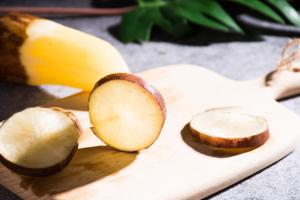How to Care for a Peace Plant
The peace plant, also known as a Spathiphyllum, is a popular indoor plant known for its distinctive white flowers and attractive glossy leaves. If you're new to caring for houseplants, the peace plant is a great choice for beginners because it's easy to care for and relatively low maintenance. In this article, we'll walk you through the steps to care for a peace plant so you can enjoy its beauty year-round.
Light
The peace plant thrives in low to medium light conditions, making it an ideal plant for offices and other indoor spaces with limited natural light. If the peace plant is exposed to direct sunlight, it can lead to leaf scorching, which causes brown spots on the leaves.
Water
The peace plant prefers consistently moist soil but does not tolerate standing water. Overwatering can cause the roots to rot, leading to the demise of the plant. To avoid this, allow the top inch of soil to dry out before watering again.
Humidity
The peace plant prefers humid environments, making it a great choice for bathrooms or kitchens. If your home is dry, you can increase humidity by placing a tray of water near the plant or by using a humidifier.
Temperature
The peace plant prefers temperatures between 65掳F and 80掳F. Avoid exposing the plant to temperatures below 55掳F, as this can cause damage to the leaves and flowers.
Fertilizer
The peace plant does not require fertilizer, but periodic feeding with a balanced, water-soluble fertilizer can help promote healthy growth and blooming. To avoid fertilizer burn, dilute the fertilizer according to the package instructions.
Repotting
The peace plant typically needs to be repotted every two to three years as it outgrows its container. When repotting, choose a container that is one size larger than the current pot and use a well-draining potting mix.
Pruning
To maintain the plant's foliage shape and size, prune away any yellow or wilted leaves as they appear. If you want to encourage more blooms, remove any fading flowers by cutting the stem back to the base.
Pests
The peace plant is generally resistant to pests, but it can attract spider mites and mealybugs. To control these pests, wash the plant with soapy water and rinse thoroughly. You can also use a pesticide labeled for use on indoor plants.
In conclusion, the peace plant is a great choice for anyone looking for a low maintenance, easy to care for indoor plant. With the right conditions and care, you can enjoy its beauty year-round. Remember to avoid overwatering, provide adequate light, and maintain proper humidity to keep your plant thriving.

 how many times do yo...
how many times do yo... how many planted tre...
how many planted tre... how many pine trees ...
how many pine trees ... how many pecan trees...
how many pecan trees... how many plants comp...
how many plants comp... how many plants can ...
how many plants can ... how many plants and ...
how many plants and ... how many pepper plan...
how many pepper plan...






























